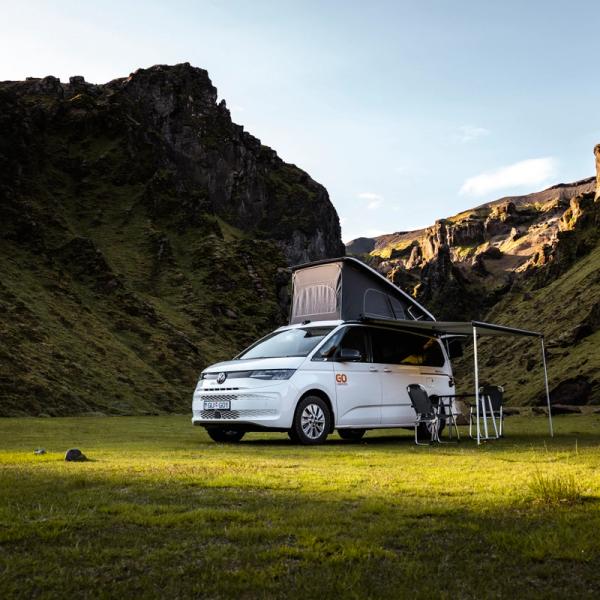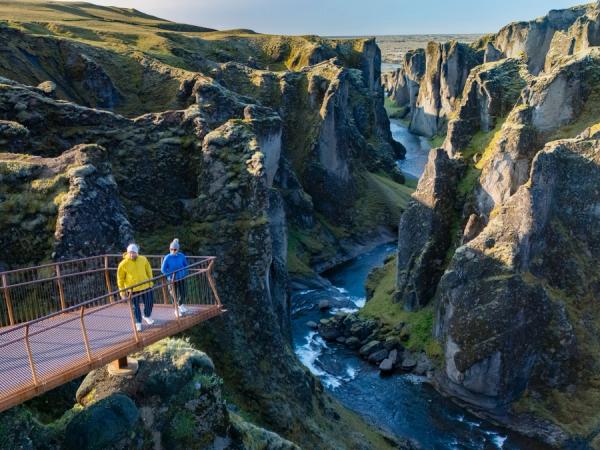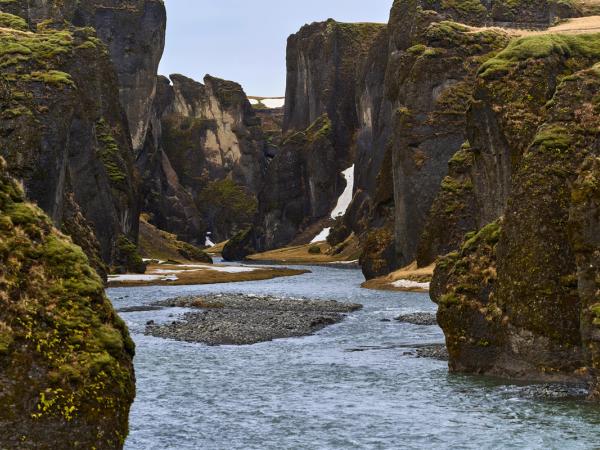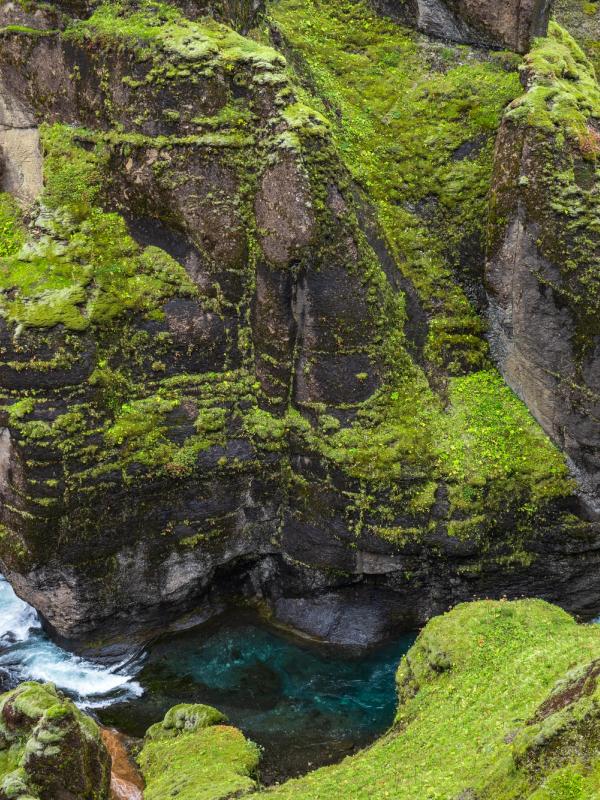
Fjaðrárgljúfur Canyon in Iceland: Complete Guide for 2025-2026
In southeast Iceland, away from the main tourist routes, lies a natural wonder that looks like something from a fantasy novel. Fjaðrárgljúfur Canyon is hard to say, but its beauty makes learning the name worth it.
I visited this place in May 2023 with friends. We had the entire canyon to ourselves, and it turned out to be a pretty exceptional experience. The quiet setting allowed us to take in the moss-covered walls and the river below without crowds. It was incredibly peaceful.
If you're planning a trip to Iceland, here's what you need to know about this natural landmark.
Key takeaways
- Fjaðrárgljúfur (pronounced "FYATH-rour-GLYOO-vur") is a 2 km long, 100 m deep canyon in southeast Iceland formed about 9,000 years ago
- Best visited from May to September for lush moss and better weather
- Located just off Ring Road (Route 1) near Kirkjubæjarklaustur
- Features an easy 2.1-mile hiking trail most people can handle
- Parking costs 1000 ISK (about $7) through the Parka app
- Photography works best during early morning or late evening for better light
- Visiting during May or September often means fewer people
What's Fjaðrárgljúfur Canyon?
Fjaðrárgljúfur is a winding canyon in southeast Iceland. Its name means "Feather River Canyon." The canyon is approximately 2 kilometers (1.25 miles) long and reaches depths of up to 100 meters (330 feet) in some areas.
The walls are made of palagonite, a type of rock formed when volcanic glass is altered by water. These walls are covered in green moss during summer, creating a stark contrast with the dark rock underneath. The Fjaðrá River flows along the canyon floor, slowly shaping this natural feature.
What makes this canyon special is its snaking shape and the color of the moss-covered walls. These elements create a landscape that seems more suited to movies than to real life.
Despite its beauty, the canyon wasn't well-known until recently, when it gained fame after appearing in Justin Bieber's 2015 music video "I'll Show You" and briefly in Game of Thrones. This exposure drew many more visitors, prompting efforts to protect the fragile environment as a result.
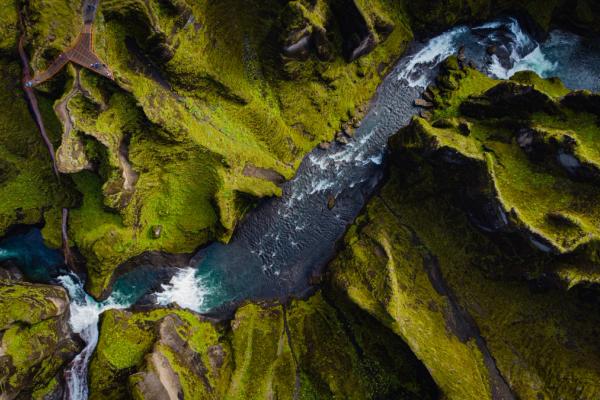
Formation, History & Jump to Fame
Fjaðrárgljúfur formed about 9,000 years ago at the end of the last Ice Age. As glaciers melted away, huge floods of water cut through the 2-million-year-old bedrock, creating the deep, winding gorge we see today.
This fast formation explains the canyon's sharp edges and big depth. The Fjaðrá River still shapes the canyon, though much more slowly than the glacial floods that first carved it.
Recent Rise to Fame
For hundreds of years, Fjaðrárgljúfur was mostly unknown outside Iceland. This changed in 2015 when Justin Bieber released his music video for "I'll Show You," which showed him running along the canyon rim and swimming in the river.
The video was seen hundreds of millions of times. Almost overnight, this quiet natural site became a popular destination. Visitor numbers went up by 80% in just one year after the video came out.
This sudden popularity had its downsides. The increased foot traffic damaged the delicate moss covering the canyon walls, moss that grows very slowly, at only 1-2 centimeters per century. In response, Iceland temporarily closed the site in 2019 to let the environment recover.
Today, the canyon is protected as part of the Katla UNESCO Global Geopark, and it has better trails to reduce impact while allowing people to enjoy its beauty.
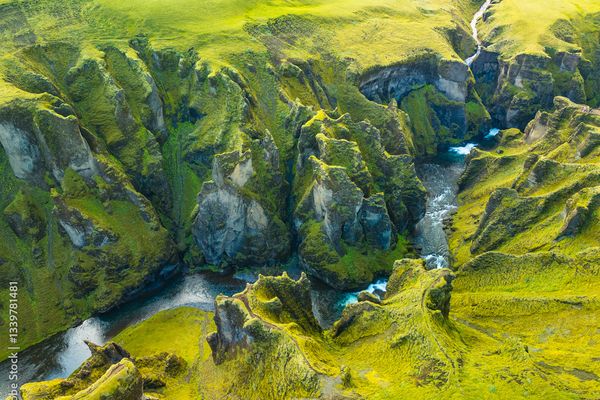
Location & How to Get There
Fjaðrárgljúfur is in southeast Iceland, about 250 km (155 miles) east of Reykjavík and just 10 km (6.21 miles) west of the small town of Kirkjubæjarklaustur.
From Reykjavík
If you're driving from Reykjavík, plan for a 3 to 3.5-hour drive along the Ring Road (Route 1). Head east past Vík and continue until you're about 10 km before reaching Kirkjubæjarklaustur. Look for signs to Fjaðrárgljúfur on your left.
Turn onto Road 206 (a gravel road) and follow it for about 2 km until you reach the parking area. Regular cars can handle this road in summer, though renting a 4x4 is better in winter or after heavy rain.
From Elsewhere in Iceland
- From Vík: Drive east on Route 1 for about 70 km (50 minutes)
- From Jökulsárlón Glacier Lagoon: Drive west on Route 1 for about 120 km (1.5 hours)
- From Skaftafell: Drive west on Route 1 for about 50 km (45 minutes)
Parking and Fees
The main parking lot is at the canyon's southern entrance. As of 2025, parking costs 1000 ISK (about $8), which you can pay through the Parka app. This money helps maintain facilities and protect the site.
There are two parking options: a lower main lot located near the trailhead and a smaller upper lot closer to a viewpoint. The lower lot is better for most visitors, especially those in standard 2WD vehicles.
Public Transport
There's no direct public transportation to Fjaðrárgljúfur. If you don't have a car, your options are:
- Join a guided tour from Reykjavík or nearby towns that includes the canyon
- Take a bus to Kirkjubæjarklaustur and arrange a taxi for the final 6 km
Road Conditions
The access road (Road 206) is gravel, but it is generally in good shape. In summer, any vehicle should manage without problems. In winter (November to March), ice and snow might require a 4x4 vehicle with winter tires. Always check road.is for current conditions before setting out.
Things to do There
Although hiking the canyon’s rim is the main activity here, but there are other cool things to do.
Hiking the Canyon Rim
The main activity at Fjaðrárgljúfur is hiking the marked trail along the eastern rim of the canyon. This easy 2.1-mile (3.4 km) out-and-back path takes about 1 to 1.5 hours to complete at a relaxed pace.
The trail starts from the lower parking lot and rises gently to follow the canyon edge. Along the way, you'll find several fenced viewpoints offering views of the canyon below. The path ends at a platform overlooking Mögárfoss, a waterfall where the river enters the canyon.
When I visited in May 2023 with friends, we had the entire trail to ourselves. We could take our time at each viewpoint, really taking in the landscape.
The trail suits most fitness levels, though it can be muddy after rain and slippery in winter. Sturdy shoes are recommended, and trekking poles can help in wet conditions.
Photography
Fjaðrárgljúfur is ideal for photography, as it offers dramatic landscapes regardless of your skills as a photographer or your equipment.
The best spots for photos include:
- The End Platform: For the view looking down the length of the canyon, with the river winding below
- Mid-Trail Viewpoints: For angles capturing the mossy walls and unique rock formations
- The Bridge Area: Near the parking lot, looking upstream into the canyon's entrance
For better lighting, try visiting during golden hour (shortly after sunrise or before sunset) when the low sun casts a warm light across the canyon walls and creates shadows. In summer, you can visit very early or very late due to Iceland's long daylight hours.
Wide-angle lenses work well to capture the entire canyon, while telephoto lenses can highlight specific features or compress the perspective to emphasize the winding river.
Exploring the Canyon Floor (Seasonal)
During summer, when water levels are low, some visitors wade upstream from the canyon entrance to explore from below. This (unofficial) route provides you with a different perspective, with tall walls rising on both sides.
This option requires crossing the shallow river multiple times on slippery rocks, so it's only recommended if you’re a confident hiker with proper footwear. Be aware that this route may be closed to protect nesting birds and fragile vegetation, especially in spring.
Drone Photography
If you have a drone, Fjaðrárgljúfur offers impressive aerial views. The canyon's winding path is particularly striking from above. Always check current regulations, as drone rules can change, and never fly directly over other visitors.
Practical Information for Visitors
The weather, timing, and what to bring can make or break your visit to Fjaðrárgljúfur. Here's what you need to know to make the most of your trip.
Weather
Iceland's weather changes quickly, and conditions at Fjaðrárgljúfur are no exception. Here's what to expect by season:
Summer (June-August)
- Temperatures generally range from 10-15°C (50-60°F)
- Long daylight hours (20+ hours in June)
- Most stable weather, though rain is still common
- Busiest tourist season
Spring/Fall (April-May, September-October)
- Temperatures around 5-10°C (40-50°F)
- Moderate daylight hours
- More chance of rain and wind
- Fewer crowds than summer
Winter (November-March)
- Temperatures often below freezing, typically 0 to -5°C (32 to 23°F)
- Limited daylight (as little as 4-5 hours in December)
- Possible snow and ice on trails
- Road access may be difficult
- Few visitors
Regardless of when you visit, dress in layers and bring a waterproof jacket.
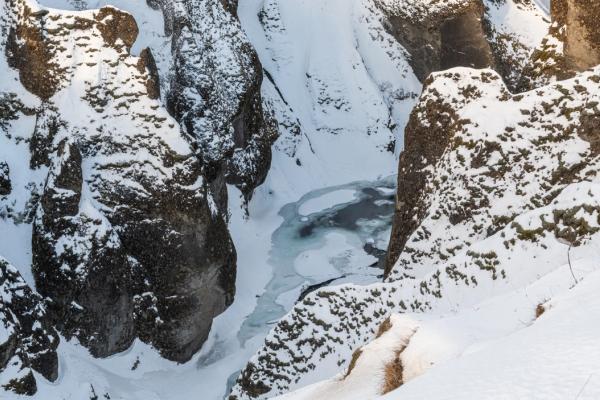
Best time to visit
For good conditions, visit Fjaðrárgljúfur between May and September. The canyon looks best during this period, with green moss covering the walls and more stable weather.
If you want to avoid crowds, try these approaches:
- Visit early in the morning (before 10 AM) or in the evening, after tour buses have left
- Plan your trip for May or September when there are fewer tourists, but conditions are still good
- If you visit in winter, you'll likely have the canyon to yourself, but be prepared for tough weather and limited daylight
Based on my May 2023 visit, the shoulder season can be ideal. We had good weather and no crowds. The morning light cast shadows across the canyon walls, making for good photos without competing for space at viewpoints.
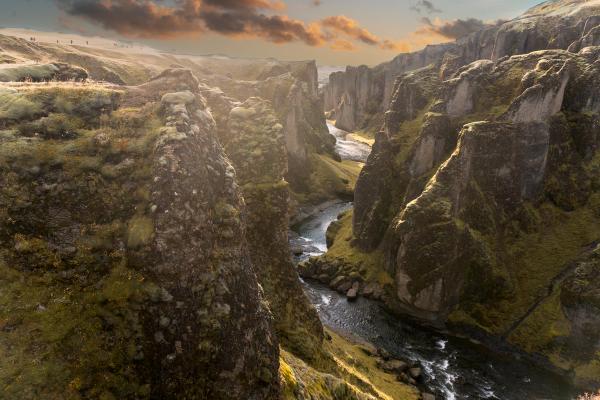
What to Bring
For a comfortable visit to Fjaðrárgljúfur, pack:
- Sturdy shoes with good grip (hiking boots preferred, especially if wet)
- Waterproof jacket, even on sunny days
- Layers of clothing to adjust to changing temperatures
- Water bottle and snacks (no facilities at the site)
- Camera with charged batteries
- Sunglasses and sunscreen in summer
- Trekking poles if you have balance concerns or if it's wet
- Mobile phone with the Parka app installed for parking payment
- Cash or cards for nearby town facilities (Kirkjubæjarklaustur)
In winter, add:
- Crampons or ice grips for your shoes
- Extra warm layers
- Headlamp or flashlight due to limited daylight
Things to do & Places to visit Nearby
Southeast Iceland offers many attractions within easy driving distance of Fjaðrárgljúfur. Here are some of the best places to include in your itinerary.
Kirkjubæjarklaustur
Just 10 km (6.21 miles) east of Fjaðrárgljúfur, this small village (locals call it "Klaustur") offers basic services like gas stations, restaurants, and places to stay. Points of interest include Systrafoss (Sisters' Waterfall), a dual waterfall located behind the village; Kirkjugólf (Church Floor), where natural basalt columns form a tiled-like floor; and Stjórnarfoss, a less-visited but beautiful waterfall just outside town.
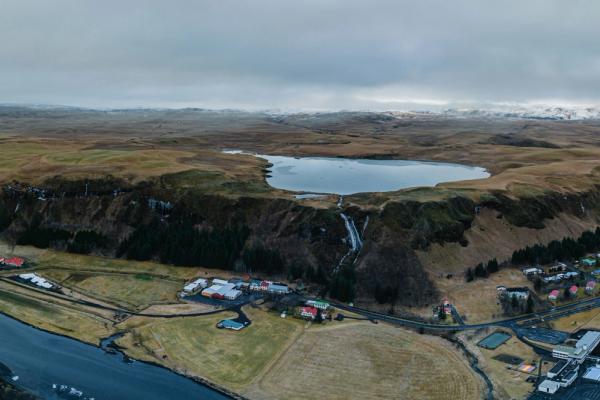
Skaftafell
Part of Vatnajökull National Park, Skaftafell is approximately 1 hour east by car and offers Svartifoss, a stunning waterfall surrounded by basalt columns; glacier hiking tours with guided walks on glaciers; and multiple hiking trails of varying difficulty levels, offering mountain and glacier views.
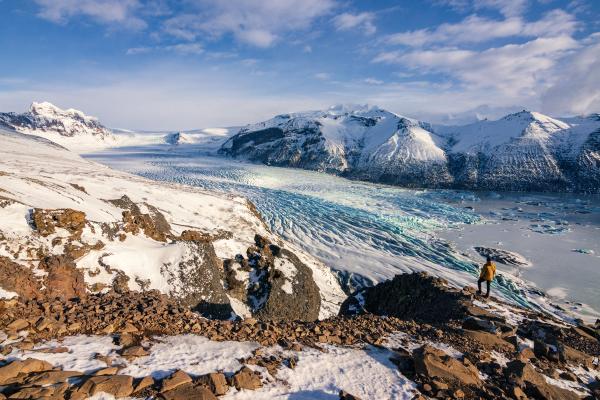
Jökulsárlón Glacier Lagoon
About 1.5 hours east, this lagoon is one of Iceland's most famous attractions. You can watch massive chunks of ice float in the lagoon, visit Diamond Beach where ice chunks wash up on black sand, and take boat tours to get close to icebergs on amphibious or zodiac boats.
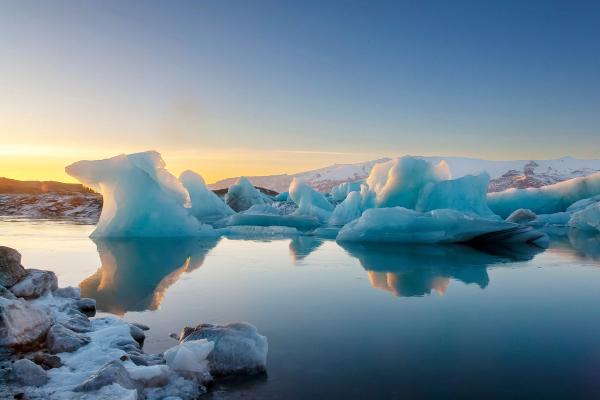
Vík and Reynisfjara Black Sand Beach
About 50 minutes west, you'll find Reynisfjara, Iceland’s most famous black sand beach, known for its basalt columns and powerful waves, with the Reynisdrangar sea stacks visible from shore. If you drive 15 more minutes west, you’ll reach Dyrhólaey, a promontory featuring a sea arch and a puffin nesting site (in the summer).
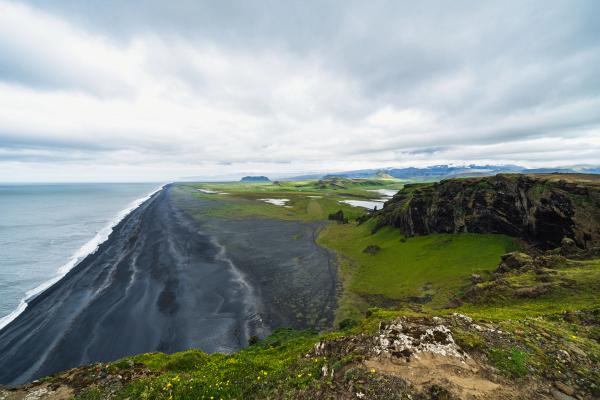
Eldhraun Lava Field
Just west of Kirkjubæjarklaustur, this vast moss-covered lava field is the result of the 1783 Laki eruption. It offers a unique landscape of lava rocks covered in thick moss, as well as roadside stops with easy access for photos along the Ring Road.
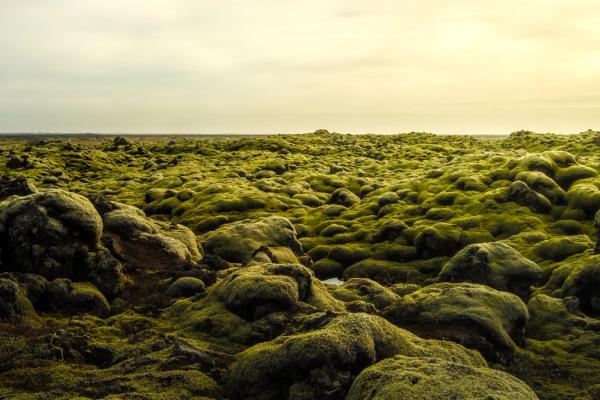
Laki Craters
Only accessible in summer (4x4 required), this volcanic fissure was the site of one of history's most impactful eruptions. You can explore the crater row and the surrounding landscape on hiking trails or join a guided Super Jeep tour from Kirkjubæjarklaustur.
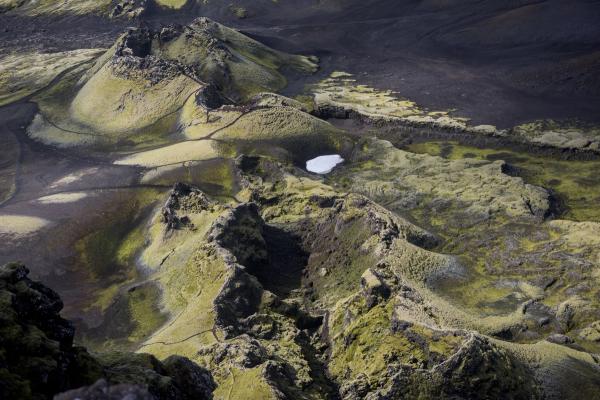
Safety and Conservation
Visiting responsibly is crucial to preserving Fjaðrárgljúfur for future generations. Here are the key things to know about safety and protecting this fragile environment.
Stay on marked trails
The most important rule at Fjaðrárgljúfur is to stay on the marked paths. Going off-trail damages the fragile moss (which grows at just 1-2 cm per century) and can be dangerous near cliff edges. Follow rope boundaries and respect any closure signs.
Weather awareness
Iceland's weather can change in the blink of an eye. Check forecasts before visiting, and be prepared to adjust your plans if conditions get worse. Wind can be particularly dangerous near canyon edges, and rain may make paths slippery.
Cliff dangers
The canyon is up to 100 meters deep in places, with steep drops. Keep a safe distance from edges, watch children closely, and never cross safety barriers for photos. No photo is worth risking your safety.
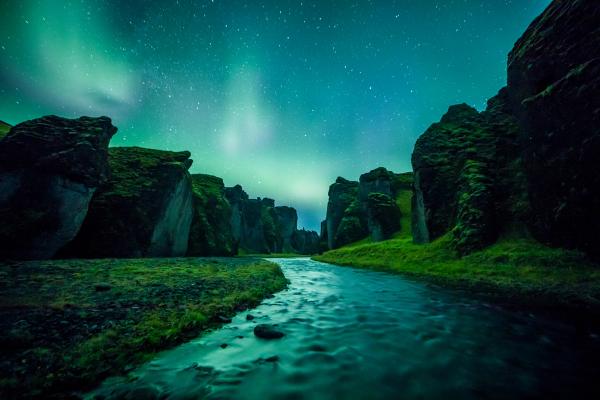
Conclusion
Fjaðrárgljúfur Canyon showcases Iceland at its finest, where geology, water, and time have combined to create a landscape that seems plucked from fantasy. Despite its growing popularity, this winding gorge remains a serene and peaceful place, especially if you time your visit carefully.

